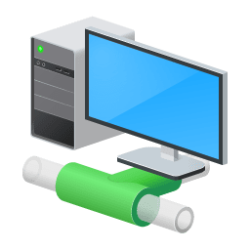This tutorial will show you how to use Quick Machine Recovery test mode in Windows 11.
Quick machine recovery is a feature that enables the recovery of Windows devices when they encounter critical errors that prevent them from booting. This feature can automatically search for remediations in the cloud and recover from widespread boot failures, significantly reducing the burden on IT administrators when multiple devices are affected.
Building on the foundation of Startup Repair, quick machine recovery uses a secure and connected Windows Recovery Environment to scan Windows Update for remediation options. This allows devices to be recovered without requiring manual intervention.
Quick machine recovery offers a test mode, providing a controlled, simulated environment for you to validate your configurations and the auto remediation process without triggering an actual system failure. Test mode allows you to verify that the recovery experience functions as expected before deployment to production systems.
Starting with Windows 11 build 26200.5518 (Dev 24H2) and build 26120.3653 (Beta 24H2), as a follow up to the last announcement of quick machine recovery, the test remediation package is now available for Windows Insiders to experience the full capabilities of QMR in action. Microsoft encourages Windows Insiders to test it today. The remediation package “Quick machine recovery update for Windows 11” will be automatically installed by QMR when “test mode” is activated. To verify the quick machine recovery remediation is installed, go to Settings > Windows Update > Update history. The remediation should be listed under Quality updates. Please note that the ability to see the remediation package in your Windows Update history is gradually rolling out so not everyone will see this listed there right away. To provide feedback, simply open the Feedback Hub app on your Windows device, navigate to Recovery and Uninstall > Quick Machine Recovery, and share your insights. Stay tuned for further updates and enhancements as Microsoft continues to improve the resilience and reliability of Windows.
Reference:

Quick Machine Recovery
Learn about quick machine recovery and how to configure it with the RemoteRemediation configuration service provider (CSP).
learn.microsoft.com
Here's How:
1 Open Windows Terminal (Admin), and select Command Prompt.
2 Copy and paste the command below into Terminal (Admin), and press Enter to enable test mode. (see screenshot below)
reagentc /SetRecoveryTestmode3 Copy and paste the command below into Terminal (Admin), and press Enter to set Windows to boot to WinRE on the next boot:. (see screenshot below)
reagentc /BootToRe4 Restart the computer to start test mode.
5 The system will now start test mode and go through autoremediation of a simulated crash and reboots back to Windows. (see screenshots below)
If after reboot the device goes into Windows RE instead of starting test mode, follow these steps:
1) In Windows RE, select Continue to boot Windows normally.
2) In Windows, execute the two commands:
reagentc.exe /Disable
reagentc.exe /Enable
3) Retry the quick machine recovery simulation starting from step 1
6 You can verify the quick machine recovery remediation in Windows Update history. The remediation should be listed under Quality updates. (see screenshot below)

View Update History in Windows 11
This tutorial will show you how to view update history to see which Windows Updates failed or successfully installed on your Windows 11 PC. Windows Update keeps Windows 11 updated by automatically downloading and installing the latest updates, drivers, and hotfixes released by Microsoft. You...
 www.elevenforum.com
www.elevenforum.com
That's it,
Shawn Brink
Last edited:












